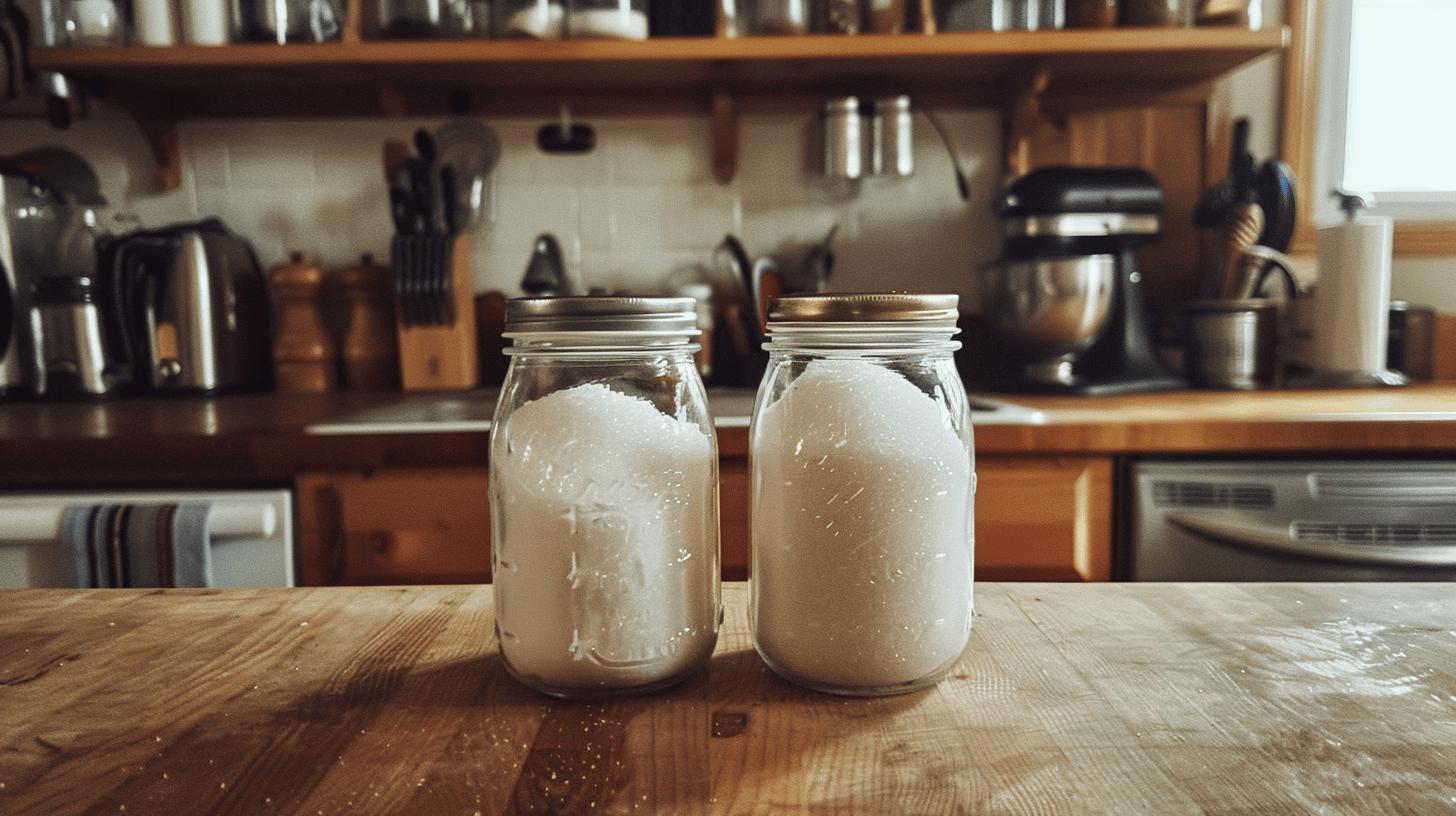Is the purity of your sugar impacting the quality of your products? When choosing between ICUMSA 45 and ICUMSA 150, understanding their nuances is crucial. These sugar standards differ significantly in color, purity, and suitability for various applications. ICUMSA 45 represents the highest level of refinement, delivering pure white granules ideal for premium products. On the other hand, ICUMSA 150, with its light brown hue, offers a cost-effective option for less stringent requirements. This guide explores the key differences, helping you to make an informed decision for your business needs.
Understanding ICUMSA 45 and ICUMSA 150
The ICUMSA scale measures sugar purity and quality based on color. Developed by the International Commission for Uniform Methods of Sugar Analysis (ICUMSA), it assigns a numerical value to the color of sugar, with lower numbers indicating higher purity and lighter color.
ICUMSA 45 has a maximum color index of 45 ICUMSA units. This indicates highly refined, pure white sugar. Its high level of purity makes it ideal for applications requiring a clean, neutral taste and appearance, such as in beverages, confectioneries, and pharmaceuticals.
ICUMSA 150, on the other hand, has a color index of up to 150 ICUMSA units. This type of sugar is less refined, resulting in a light brown or off-white color. The retained molasses content gives ICUMSA 150 a slightly richer flavor and makes it suitable for applications where slight coloration and added flavor are acceptable, like in baking and brewing.
Production Processes of ICUMSA 45 vs ICUMSA 150

Refining is a critical part of sugar production, determining the final product's purity, color, and suitability for various applications. The refining process for ICUMSA 45 is more intricate compared to ICUMSA 150, resulting in higher purity and a brighter white color.
Refining Process for ICUMSA 45
The production of ICUMSA 45 sugar involves several refining steps to achieve its high purity and bright white color.
- Affination: This initial stage removes surface molasses and impurities by mixing raw sugar with a syrup, then centrifuging the mixture to separate the impurities.
- Carbonatation: This step further purifies the sugar by adding milk of lime and carbon dioxide to the sugar solution. The resulting calcium carbonate traps impurities, which are then filtered out.
- Filtration: Multiple rounds of filtration ensure the removal of any remaining impurities, resulting in a clear, pure sugar solution.
- Crystallization: The purified sugar solution undergoes crystallization to form high-purity sugar crystals. These crystals are then washed and dried to achieve the final product, ICUMSA 45.
Refining Process for ICUMSA 150
ICUMSA 150 sugar undergoes fewer refining steps, retaining more natural molasses and color.
- Affination: Similar to ICUMSA 45, this step removes surface molasses and impurities from raw sugar.
- Filtration: In some cases, a single round of filtration is sufficient to achieve the required purity for ICUMSA 150. This process removes major impurities but retains natural molasses, resulting in a light brown or off-white color.
The reduced number of steps in refining ICUMSA 150 means it retains more of its natural components, including molasses, which contribute to its distinct flavor and color.
Comparing the two processes, ICUMSA 45 undergoes additional steps like carbonatation and multiple filtrations to achieve its high purity and bright white color. In contrast, ICUMSA 150's simpler refining process retains more natural molasses, resulting in a less refined, slightly colored sugar.
Applications and Uses of ICUMSA 45 and ICUMSA 150
Choosing the right type of sugar for specific applications is crucial to ensure the desired quality, taste, and appearance of the final product. ICUMSA 45 and ICUMSA 150 sugars are tailored for different uses based on their distinct characteristics.
Key Uses of ICUMSA 45
- Confectioneries: The high purity and bright white color of ICUMSA 45 make it ideal for candies, chocolates, and other sweets.
- Beverages: Widely used in soft drinks, juices, and energy drinks for its neutral taste and clear appearance.
- Pharmaceuticals: Preferred in medicinal syrups and tablets due to its high purity and absence of impurities.
- Direct Human Consumption: Commonly found in households for everyday use in cooking and baking.
Key Uses of ICUMSA 150
- Baking: The slight coloration and retained molasses content make ICUMSA 150 suitable for bread, cakes, and pastries.
- Brewing: Utilized in the production of beer and other alcoholic beverages where the natural molasses flavor is advantageous.
- Industrial Applications: Employed in non-food industries where color and purity are less critical, such as biofuels and fermentation processes.
- Food Manufacturing: Used in processed foods where slight color and flavor variations are acceptable.
Comparing their uses, ICUMSA 45 is predominantly favored in industries requiring high purity and a clean, white appearance, such as confectioneries, beverages, and pharmaceuticals. Meanwhile, ICUMSA 150 is more economical and suitable for applications like baking, brewing, and various industrial processes where slight coloration and natural flavor from molasses are acceptable.
Pricing and Market Trends of ICUMSA 45 and ICUMSA 150

Several factors affect sugar pricing, including production costs, demand, and regional availability. ICUMSA 45, known for its higher purity and more intensive refining process, generally commands a higher price compared to ICUMSA 150, which is more affordable and accessible due to its simpler production process.
| Region | ICUMSA 45 Price | ICUMSA 150 Price |
|---|---|---|
| Brazil | $500 per ton | $400 per ton |
| South America | $520 per ton | $420 per ton |
| India | $550 per ton | $430 per ton |
Market demand for ICUMSA 45 and ICUMSA 150 varies based on region and industry. ICUMSA 45 is highly sought after in industries requiring high purity and a clean, white appearance, such as confectioneries, beverages, and pharmaceuticals. Its premium quality justifies its higher price. Conversely, ICUMSA 150 is favored in baking, brewing, and industrial applications where slight coloration and natural molasses are acceptable, making it a cost-effective choice for these sectors.
Factors influencing pricing and market trends include production costs, regional demand, and industry-specific requirements. The intensive refining process of ICUMSA 45 increases its production costs, contributing to its higher market price. Regional variations in demand also play a crucial role; for instance, countries with stringent quality standards and preferences for high-purity products may exhibit greater demand for ICUMSA 45. Conversely, regions prioritizing cost-efficiency and versatile use may lean towards ICUMSA 150. Understanding these dynamics helps stakeholders make informed decisions based on their specific needs and market conditions.
Health and Nutritional Implications of ICUMSA 45 and ICUMSA 150
Sugar consumption, whether ICUMSA 45 or ICUMSA 150, has significant health impacts. Both types of sugar are primarily composed of sucrose, which is linked to health risks such as obesity and diabetes when consumed in excess. Moderation is key to avoiding these potential health issues.
Nutritional Content Comparison
- ICUMSA 45: Primarily composed of sucrose, offering high purity.
- ICUMSA 150: Contains slightly more minerals and has molasses.
- Both types: Carry potential risks of obesity and diabetes.
- Small amounts of calcium: Present in ICUMSA 150.
- Potassium and iron: Found in ICUMSA 150.
Balancing sugar consumption involves understanding the nutritional differences and health implications of ICUMSA 45 and ICUMSA 150. ICUMSA 45, due to its high purity, lacks the minor nutritional benefits present in ICUMSA 150, such as small amounts of calcium, potassium, and iron. However, both types should be consumed in moderation to mitigate the risks associated with high sugar intake. Selecting the right type of sugar depends on the specific health considerations and nutritional needs of the consumer.
Choosing Between ICUMSA 45 and ICUMSA 150 for Your Needs

Selecting the right type of sugar for specific applications is crucial for achieving the desired quality, taste, and appearance in the final product. Each type of sugar offers distinct benefits that cater to different needs.
ICUMSA 45 Benefits:
- High-purity.
- Visually appealing.
- Suitable for pharmaceuticals and direct consumption.
ICUMSA 150 Benefits:
- More economical.
- Slight coloration.
- Suitable for industrial applications.
When deciding between ICUMSA 45 and ICUMSA 150, consider factors such as purity, color, and cost. ICUMSA 45 is ideal for applications requiring high purity and a clean, white appearance, such as in pharmaceuticals and direct human consumption. On the other hand, ICUMSA 150 is more cost-effective and suitable for uses where slight coloration and natural molasses flavor are acceptable, such as in baking and industrial applications. Balancing these factors will help in selecting the right type of sugar that aligns with specific needs and preferences.
Final Words
Understanding the differences between ICUMSA 45 and ICUMSA 150 is crucial for making informed purchasing decisions.
ICUMSA 45, with its higher purity and bright white color, suits applications requiring refined sugar, like confectioneries and pharmaceuticals.
ICUMSA 150, less refined with slight coloration, fits well in industrial applications where cost-efficiency is essential.
In comparing ICUMSA 45 vs ICUMSA 150, each has its place depending on the application requirements and budget constraints.
Carefully evaluate your needs to ensure you select the appropriate sugar for your specific industry.
FAQ
What is ICUMSA 150 sugar?
ICUMSA 150 sugar is a type of refined sugar with a color index of up to 150 ICUMSA units, indicating it is less refined than ICUMSA 45, often having a light brown or off-white color.
What is ICUMSA 45 sugar used for?
ICUMSA 45 sugar is used in confectioneries, beverages, and pharmaceuticals due to its high purity and white color.
What is the difference between ICUMSA 45 and ICUMSA 150?
The main difference between ICUMSA 45 and ICUMSA 150 lies in their refinement levels. ICUMSA 45 is highly refined and pure white, while ICUMSA 150 is less refined, often appearing light brown or off-white.
What is the difference between ICUMSA 45 and 100?
ICUMSA 45 is highly refined sugar with a maximum color index of 45, while ICUMSA 100 is less refined, resulting in a higher color index and potentially more impurities.
What are the specifications of ICUMSA 150 sugar?
ICUMSA 150 sugar has a color index of up to 150 ICUMSA units. It is less refined than ICUMSA 45 and retains more natural molasses, giving it a light brown or off-white color.
Are there suppliers of ICUMSA 45 sugar in Brazil?
Yes, Brazil is a major supplier of ICUMSA 45 sugar, known for producing highly refined and high-purity sugar suitable for various applications.
What is ICUMSA 600-1200?
ICUMSA 600-1200 denotes sugar with a very high color index, indicating minimal refinement and a significant presence of molasses, typically used in industrial applications.
What is the price range for ICUMSA 150 sugar?
The price of ICUMSA 150 sugar varies by region and market demand but is generally lower than ICUMSA 45 due to its lower refinement level.

